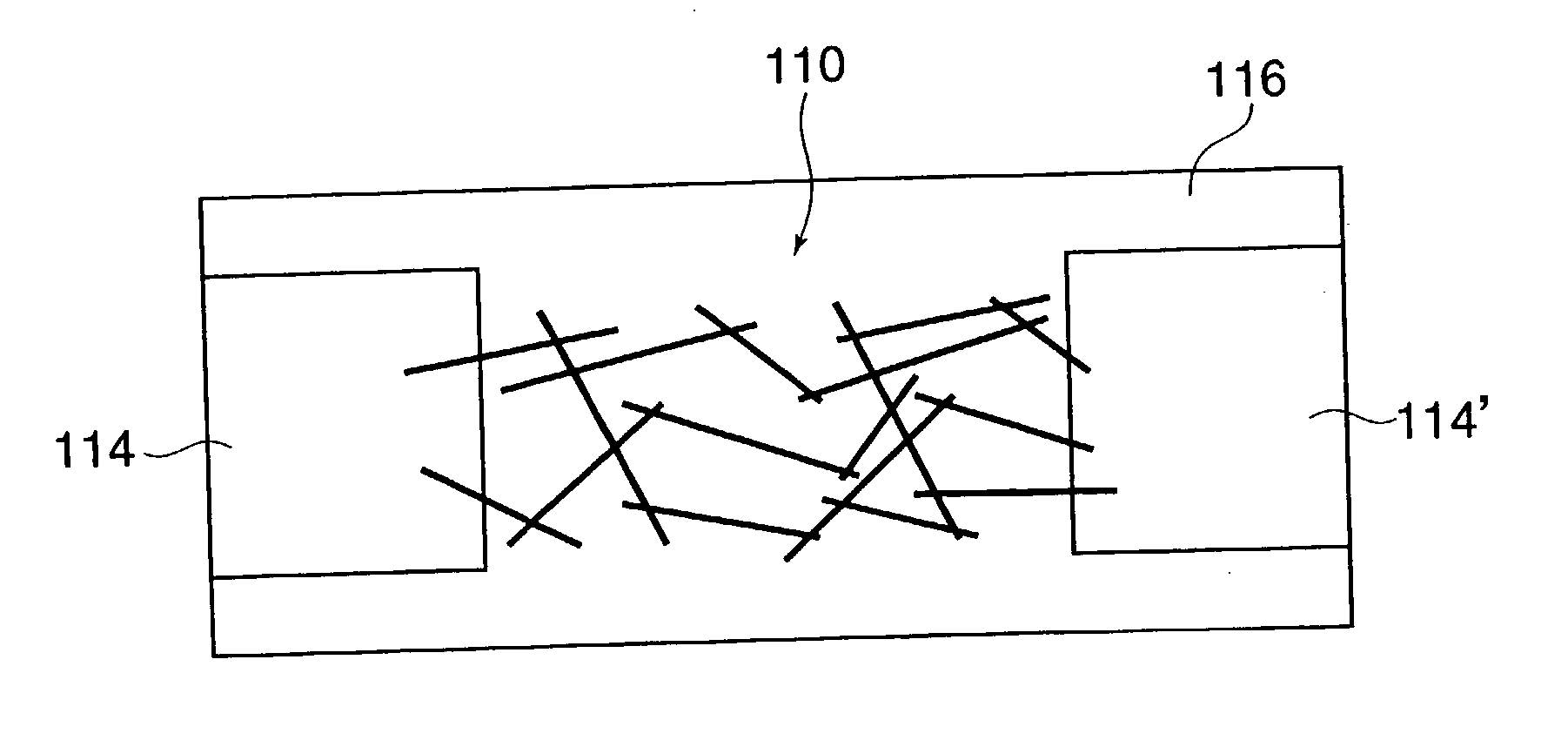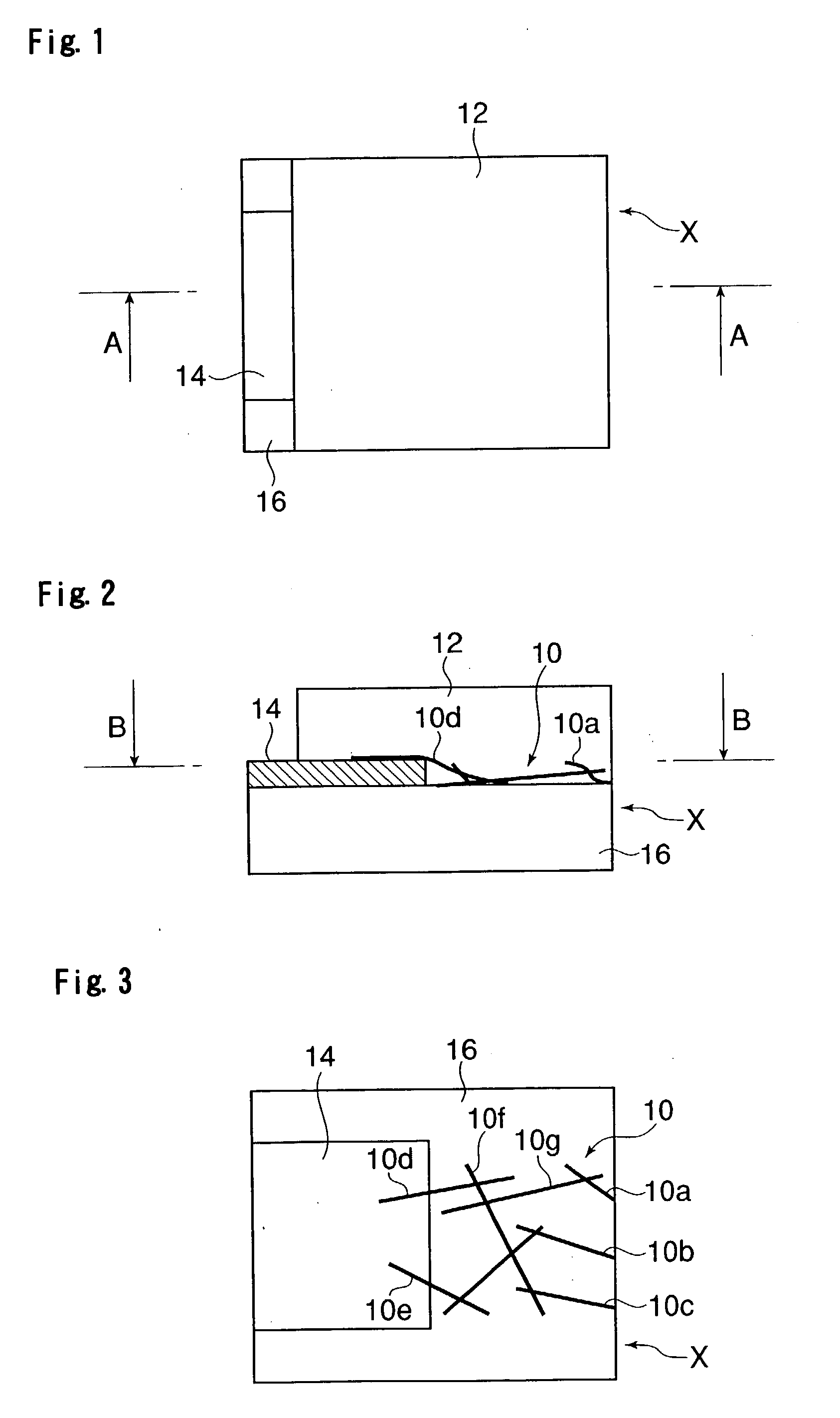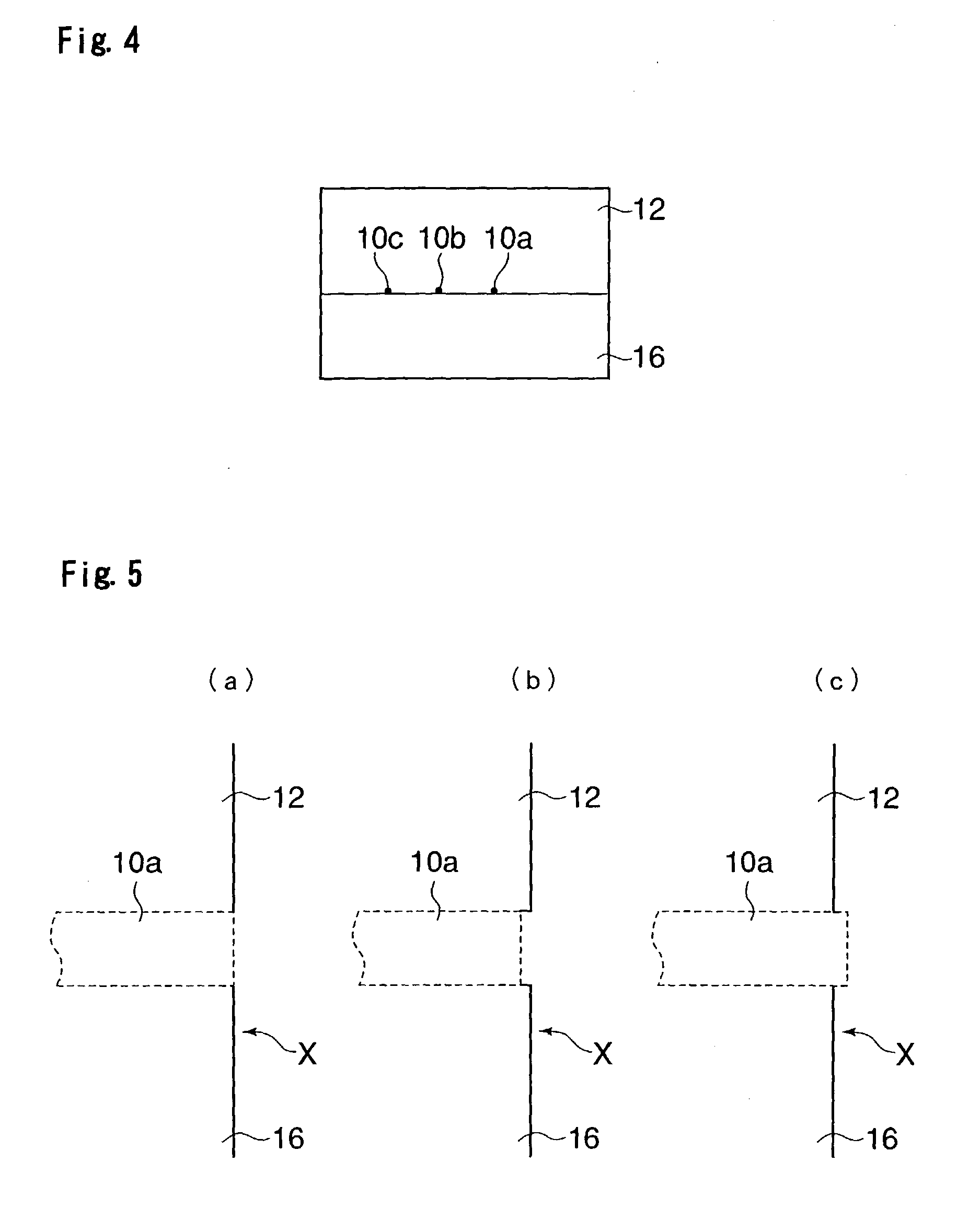Electric part and method of manufacturing the same
- Summary
- Abstract
- Description
- Claims
- Application Information
AI Technical Summary
Benefits of technology
Problems solved by technology
Method used
Image
Examples
example 1
[0199] An electric part useable as a sensor electrode in accordance with Example 1 is manufactured through the processes shown in FIGS. 11 to 17. The details will be described below.
[0200] Au is formed on a surface of a polyimide film that acts as the substrate 116 (20 mm.times.5 mm.times.20 .mu.m, and 1.times.10.sup.12 .OMEGA.cm in volume resistance) in a given region from both the ends through the vapor deposition method, to thereby obtain a state shown in FIG. 11 where the electrodes 114 and 114' (7 mm.times.1 mm.times.about 200 nm, respectively) are formed (electrode layer forming process).
[0201] On the other hand, multi-layer carbon nanotubes that are 20 nm in number average diameter and 3 .mu.m in number average length are added in a dispersion medium with a concentration of 0.1 mass % to prepare a dispersion solution A. The dispersion medium in which a surface active agent (benzalkonium chloride made by Wako Pure Chemical Industries, Ltd.) is added to water with 1 mass % is u...
example 2
[0209] An electric part according to Example 2 is manufactured as in Example 1 except that the carbon nanotubes used in Example 1 is replaced by single-layer carbon nanotubes which are about 1 nm in number average diameter and 3 mm in number average length.
[0210] The measurement of voltammetry is conducted on the electric part obtained by this example as in Example 1. A graph exhibiting the measured result is shown in FIG. 24. As shown in FIG. 24, it is found that the electric part according to this example functions as a sensor electrode that enables a high-speed response without drawing a hysteresis curve.
example 3
[0211] The electric part manufactured in Example 1 (using the multi-layer carbon nanotubes) is further subjected to a second electrode layer forming process shown in FIG. 18, to thereby manufacture the electric part of Example 1 which is useable as a rectifier. The details will be described below. In the electric part manufactured in Example 1 having the structure shown in FIG. 17, Au is formed on a surface X" through the vapor deposition method (second electrode layer forming process) to manufacture an electric part according to Example 3 having the structure shown in FIG. 18 in which a second electrode layer 120 is formed in thickness of about 200 nm.
[0212] The measurement of the current-to-voltage characteristic is conducted on the electric part obtained in accordance with this example. The measurement of the current-to-voltage characteristic is made in a state where the electric part of this example is assembled in the device shown in a circuit diagram of FIG. 25. Referring to F...
PUM
| Property | Measurement | Unit |
|---|---|---|
| Dispersion potential | aaaaa | aaaaa |
| Electrical resistance | aaaaa | aaaaa |
| Electrical conductor | aaaaa | aaaaa |
Abstract
Description
Claims
Application Information
 Login to View More
Login to View More - R&D
- Intellectual Property
- Life Sciences
- Materials
- Tech Scout
- Unparalleled Data Quality
- Higher Quality Content
- 60% Fewer Hallucinations
Browse by: Latest US Patents, China's latest patents, Technical Efficacy Thesaurus, Application Domain, Technology Topic, Popular Technical Reports.
© 2025 PatSnap. All rights reserved.Legal|Privacy policy|Modern Slavery Act Transparency Statement|Sitemap|About US| Contact US: help@patsnap.com



